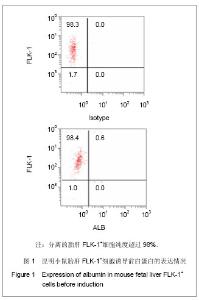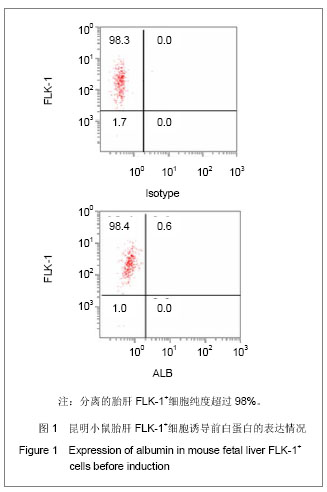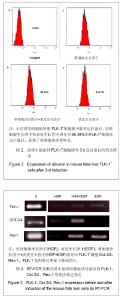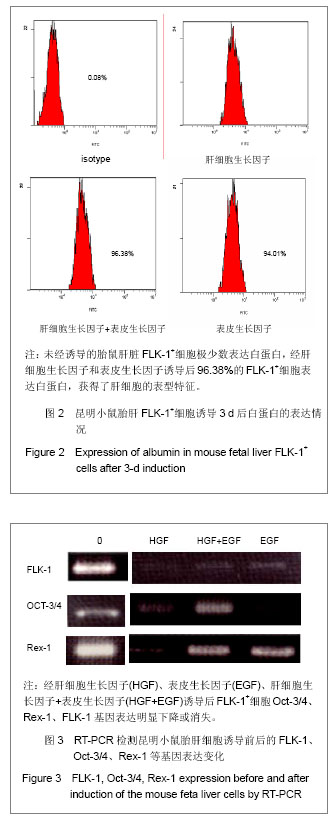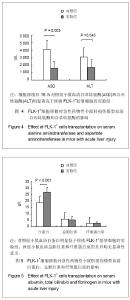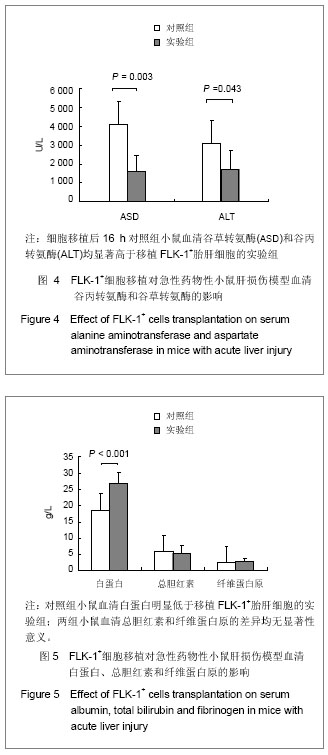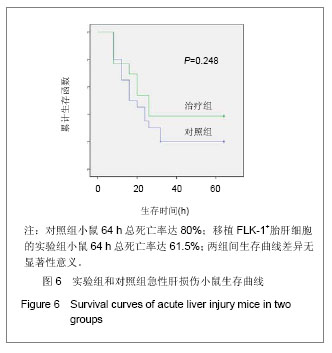| [1] Yu Y, Yao AH, Chen N, et al.Mesenchymalstem cells over-expressing hepatocyte growth factorimprove small-for-size liver grafts regeneration.Mol Ther.2007;15(7): 1382- 1389.[2] Pai M, Zacharoulis D,Milicevic MN,et al.Autologous infusion of expanded mobilized adult bone marrow - derived CD34+ cells into patientswith alcoholic liver cirrhosis.Am J Gastroenterol. 2008;30(7): 30-33.[3] Terai S, Ishikawa T,Omori K, et al.Improved liver function in patientswith liver cirrhosis after autologous bone marrow cell infusion therapy. Stem Cells.2006; 24(10): 2292-2298.[4] Jin CH,Yonemitsu Y,Sueishi K,et al.FLK-1 in fetal mouse liver identifies a multipotent hepatic precursor which differentiates into cholangiocytes and hepatocytes. Chin J Hepatol.2010; 18(7):544-545.[5] 张文佟.生存分析, SPSS统计分析高级教程[M].北京:高等教育出版社,2004:379-407.[6] Eggermann J, Kliche S, Jarmy G,et al.Endothelial progenitor cell culture and differentiation in vitro: a methodological comparison using human umbilical cord blood. Cardiovasc Res.2003,58(2):478-486.[7] Lin Y, Weisdorf DJ, Solovey A, et al. Origins of circulating endothelial cells and endothelial outgrowth from blood. J Clin Invest.2000;105(1):71-77.[8] Yamashita J,Itoh H,Hirashima M,et al.Flk1-positive cells derived from embryonic stem cells serve as vascular progenitors. Nature. 2000;408(6808): 92-96.[9] Guo Y, Liu S, Wang P, et al.Expression profile of embryonic stem cell-associated genes Oct4, Sox2 and Nanog in human gliomas.Histopathology. 2011;59(4):763-775.[10] Rezende NC, Lee MY, Monette S, et al. Rex1 (Zfp42) null mice show impaired testicular function, abnormal testis morphology, and aberrant gene expression. Dev Biol. 2011; 356(2):370-382.[11] 汪涛,姜华,陆国才,等.四氯化碳肝脏毒性研究新进展[J].毒理学杂志,2008,22(4):324-326[12] Gressner AM,Polzar B,Lahme B, et al.Induction of rat liver Parenchymal cell aPoPtosis by hePatic myofibroblasts via transforming growth factor beta.Hepatology.1996;23(3): 571-581. |
